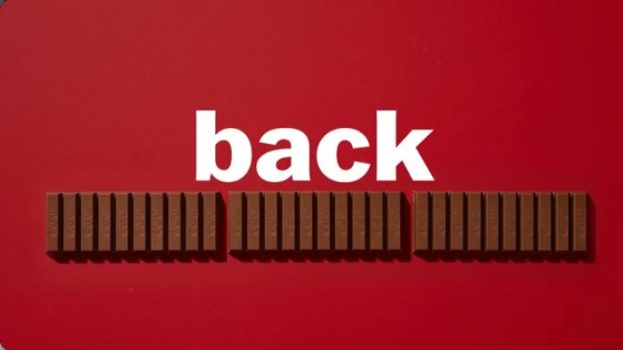 It took the help of marketers from three countries for Dr. Oetker to cook up a new pizza that ever-so-gently surfs the plant-based wave.
It took the help of marketers from three countries for Dr. Oetker to cook up a new pizza that ever-so-gently surfs the plant-based wave.
The new Yes It’s Pizza line is the rare result of a mini united nations – spanning teams from Canada, the Netherlands and Spain – coming together to brainstorm and develop a pizza pie that straddles the line between good-for-you and indulgent food, Peter Macdonald, Dr. Oetker Canada’s executive head of marketing, tells strategy.
The strategy for the SKU was locally led in Canada, creative was handled by the brand’s Dutch marketing heads, and its Spanish constituency came up with the type-heavy packaging. At first glance, the product seems to be geared toward a growing horde of health-conscious shoppers, which make sense given that the plant-based category, especially in frozen foods, is piping hot these days – putting pressure on many packaged goods co.’s to inject natural ingredients into their otherwise processed foods.
But Macdonald is quick to note that the tri-market team’s philosophy was to craft a product that doesn’t fall into the niche natural foods category. Rather, it wanted to create a mainstream product that doesn’t compromise on taste or texture by overcompensating on healthier ingredients. The pizza also isn’t aimed at vegetarians, vegans, and the like. Two of the three frozen dishes contain chicken bits and roasted ham. The Yes It’s Pizza line, he says, is actually going after “food adventurists” and meat-eaters who want to introduce more vegetables into their diet.
“The problem with going the heart-health route is that pizza is inherently an indulgent food,” he says. “So if you push the health component to the point where it satisfies somebody who is truly a health consumer, then you’re going to sacrifice some element of pizza. And so the question is, ‘Can you be more successful by trying to attract that consumer who is looking for just a little more plant? A little more health?’ Something that will have someone say, ‘You know, I want a pizza and that one has spinach in it – so even incrementally, it’s going to be better for me.'”
While the pizza dish first landed in grocery shelves in February, its supporting campaign was only recently lifted from streets, where Dr. Oetker had extensive OOH coverage, as well as TV, online and in-store advertising. Approximately 70% of the marketing budget was spent on marketing outside of stores, with the other 30% was allocated to activity in store, according to Macdonald.
Shopper marketing materials included tribute ads in flyers – which Macdonald says is “the most important marketing vehicle” in driving results for both supplier and retailer; as costly as it can be to make, “there is no better way to get exposure that close to the consumer’s actual point of decision than the flyer.” The brand also held in-store demos and sampling at events inside its travelling brand-wrapped “trattoria” truck, giving out 400,000 slices and 35,000 coupons.
“It’s important to get the product in people’s mouths,” he says. “There is sometimes the perception that if you’re going plant-based you are sacrificing on taste.”
And because the thinking was to focus on the product/taste vs. health claims, Macdonald says the team elected to slot Yes It’s Pizza next to Dr. Oetker’s 15 other gourmet pizza SKUs, which are listed under the Ristorante, Casa Di Mama, Tradizionale, and Giuseppe Pizzeria brands (giving the company a 32.9% frozen pizza market share in Canada), and have them sit in the general refrigerator section, and not in the natural foods section.
“We did circumvent traditional thinking in terms of putting it in the mainstream section, and so far it appears to have worked for us,” he says, adding that it “exceeded expectations to the point where we had a reasonably significant shortage issue for about three weeks where we were simply unable to keep up with demand… When we launched this, we expected that it would probably be a bit of a niche product – maybe more on the popular end of the niche product – but the volume that we have seen is more indicative of a mainstream product.”
While it took abnormally long to launch the vegetable-focused pizza (given the distance between the three countries, it took “double” the time it typically takes to develop a new product), Macdonald’s response to whether a cross-market collab was worth the delay (“oh gosh, 100% it was”) is a sign that there’ll be more joint efforts to come.
“Whenever you get more smart people, more brains working on something, you’re going to have new ideas and people who challenge your perspective,” he says. “Sometimes it results in someone trying to talk you out of a decision and it becomes a heated discussion; but those are the ones that challenge your in-going biases. Having different cultures and approaches opens your eyes and, more often than not, results in a better product… It’s something we’re starting to do a bit more and it’s being held up as an example of how international collaboration can be successful.”
[iframe_youtube video = “Z_wQ325Vo3g”]























